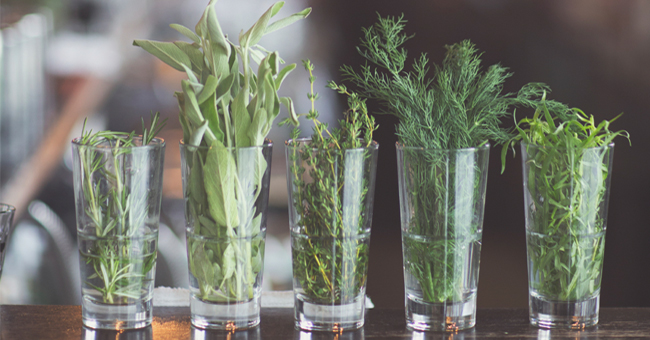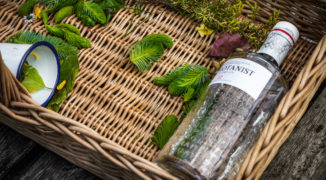Mint isn’t the only herb hanging out at the bar anymore. As rosemary, basil, shiso, and all others join it as staple cocktail ingredients and garnishes, it’s important that bartenders know how to store these fresh herbs for longevity, a crisp appearance, and to cut down on waste.
For years, home cooks have wrapped fresh herbs in moist paper towels, placed them in resealable bags, and put these in the fridge. It extends the shelf life of herbs we tend to buy for one recipe and then have way too much of left over. This is also the method employed at San Juan’s La Factoría, where they have to be very careful about herb storage because of the hot and humid climate. Herbs dry out, and keeping them too moist means they end up blackened out faster.
Bartender Misael Morales, who’s been working there for two years, says that climate is why they keep mint wrapped up in the fridge even during their shifts. “There are days that we prep them to have them out,” he notes, “but not always.” When they do keep them out, though, they use two glasses: one for sprigs, and one for leaves. The sprigs glass is filled with mineral water; the stems in the water keep the crowns stiff and crisp.
When not prepped to stay out, they split the pound of mint into three or four sections, keeping the leaves on its stem. “We wrap those divisions on a paper towel and keep them in a refrigerator at mid-temperature,” he says. While mint is the herb they keep on hand the most — for mojitos and garnishes on their house cocktails, such as the De Lo Mejor — bartenders bring in rosemary and cilantro to work on recipes. The key to keeping those fresh is to only have on hand what one needs to work with.
That is another way in which the line between bar and kitchen has blurred. Mirroring wider trends, bartenders are focused on using herbs that come from as close to the bar as possible and on not having rotten excess to throw away.
At Chicago’s The Sportsman’s Club, an in-house herb garden during the spring and summer provides the bar with all it needs. On a vertical wall in the backyard, they grow myriad herbs — it’s both supportive of a farm-to-glass ethos and a great aesthetic choice. “We harvest herbs for a night’s service, and therefore don’t need to store them for very long,” says bartender Jacyara de Oliveira. “Because we don’t have a steady cocktail menu, we are able to play around with ingredients quite a bit.”
That lack of a steady menu also means they’re able to avoid requiring any produce that’s out of season. In Chicago, there’s not the tropical expectation of 24/7 mojitos. But when they do come in, they follow traditional kitchen preservation: “Wrap them in paper towels and store them in plastic containers in the walk-in.”
The more bars are using herbs, the more they might want to consider growing their own. With all the time and paper towel usage that go into preserving what’s on hand, it might prove to be the next big sustainable trend in cocktails.





